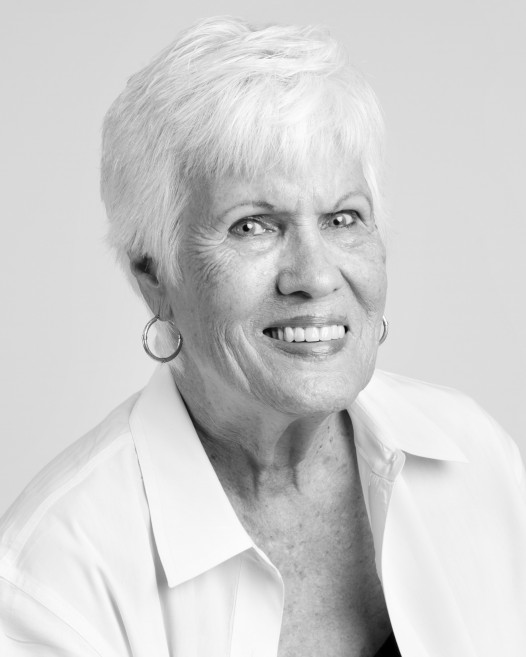
Bettye Anding
When our son was in pre-K and his sister was a toddler, we had a ravenous little dog named “Tiny,” who pursued them as they strolled about the house and yard with their big Easter baskets, the shorter, little sister dragging hers.
Mark had eaten all of his candy and most of his eggs within 24 hours after The Bunny left them, but Jill’s horde was mostly intact until Tiny began making off with her jelly beans and those little globes with the chocolate and peanut butter inside.
A day later, her dyed eggs — unwanted by the dog — were missing most of their shells, the remainders crumpled from ceaseless fondling and soiled by grimy little hands. I don’t remember how I finally got them away from her. I must have dug into packages of more of the candy and told her that The Bunny had left a secret bonus.
My kids’ Easter eggs were never as perfect as the ones that filled my baskets when I was a Bunny believer. I didn’t know that my mother was an artistic and creative dyer and decorator until several years later.
The ones she prepared for school and church hunts were pretty and nicely done, but nothing like the beautifully decaled eggs my sisters and I found in our baskets on Easter Sunday mornings. (Fortunately, our dog — like most of them in that day — was relegated to our yard.)
Then, when I was about 7 or 8 and belief in the magical abilities of The Bunny was gone, I became an Easter fashionista. Back then it was important to wear a new dress — and new white shoes — to Sunday school and church services no matter how cool and rainy the weather. And back in those days the “ladies” all wore hats, of course. I’d also become enamored of a song I’d heard Bing Crosby sing: “In your Easter bonnet / with all the frills upon it / you’ll be the grandest lady / in the Easter Parade,” written by Irving Berlin and made even more popular when Judy Garland and Fred Astaire sang it in the 1948 film of the same name.
You’ll probably hear it again on Sunday at the annual Easter Bonnet Contest at Good Friends Bar, a GLBT neighborhood bar at the corner of Dauphihttp://www.frenchquartereasterparade.com/ne and St. Ann streets in the French Quarter. Anyone can join in the contest; the crowd votes for the winners. For information, call 566-7191.
Easter Sunday’s lineup of parades starts early that morning with The Historic French Quarter Easter Parade, from Antoine’s Restaurant at 9:45 a.m. to St. Louis Cathedral for 11 a.m. Mass. The parade, consisting largely of mule-drawn carriages and old convertibles, makes its roundabout way through the Quarter, handing out stuffed Easter bunnies to the kids, along with other trinkets.
Following Mass, participants promenade to Jackson Square to show off their Easter finery before returning to Antoine’s. Awards are given out for the best Easter bonnets, baskets and overall attire.
Around 1 p.m., watch the parade featuring Chris Owens as the grand duchess. It starts at the corner of Canal and Bourbon streets and makes its way through the Quarter, with floats and vintage convertibles and one or more of the city’s famous brass bands, dance groups and other entertainers. There will be throws – Easter-themed – to catch.
Later in the afternoon, the Gay Easter Parade, put on by the city’s GLBT community, will roll. Family-friendly, it goes through the Quarter, with the paraders riding horse-drawn carriages or floats while wearing showy versions of their Easter Sunday finest. Spectators can expect to catch beads and other throws at this one, too.
When learning the words to “Easter Parade” back in the ‘40s, I mistook the words “You’ll find that you’re in the rotogravure,” and thought Astaire was singing, “You’ll find that you’re on the road to grandeur.” Maybe my line was better.
 NOLAbeings Multimedia artist Claire Bangser created NOLAbeings as a portrait-based story project that marries...
NOLAbeings Multimedia artist Claire Bangser created NOLAbeings as a portrait-based story project that marries...  Voodoo in New Orleans: Reviving history: New Orleans fortune telling This article takes a deep dive into the history of Voodoo in New Orleans, its hybridization with Catholicism, and its present-day place in the city's culture. The author visits fortune-tellers in the French Quarter, using their guidance as a tool for introspection rather than a deterministic predictor of the future. Through her experiences in New Orleans, the author feels a mystical connection to both the past and the future.
Voodoo in New Orleans: Reviving history: New Orleans fortune telling This article takes a deep dive into the history of Voodoo in New Orleans, its hybridization with Catholicism, and its present-day place in the city's culture. The author visits fortune-tellers in the French Quarter, using their guidance as a tool for introspection rather than a deterministic predictor of the future. Through her experiences in New Orleans, the author feels a mystical connection to both the past and the future. 